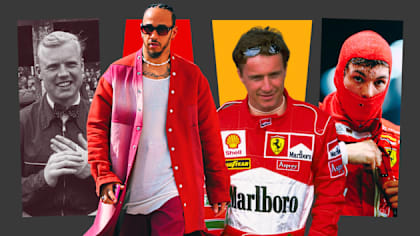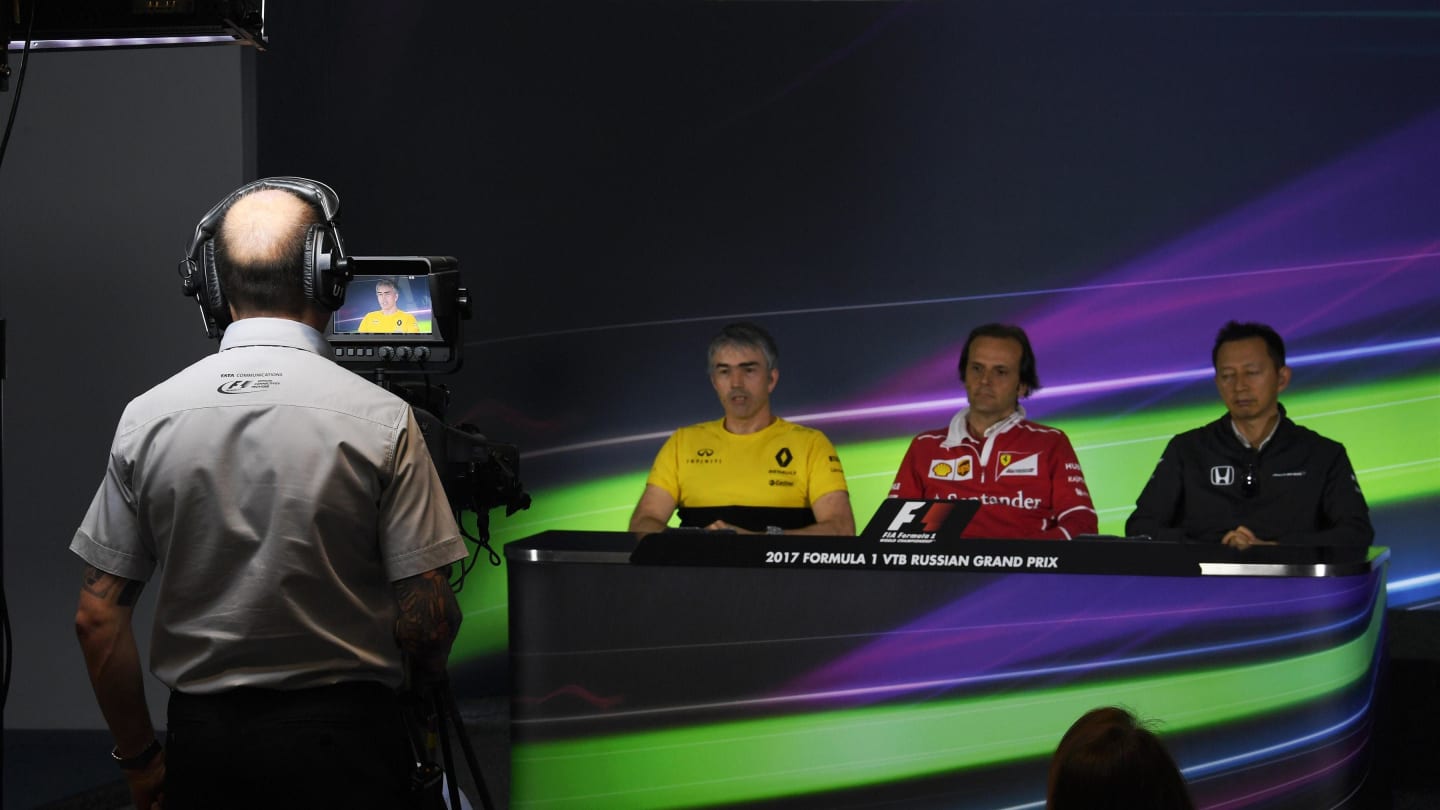
News
FIA Friday press conference - Russia
Share

PART ONE: TEAM REPRESENTATIVES – Yusuke Hasegawa (Honda), Luigi Fraboni (Ferrari), Nick Chester (Renault)
Q: Luigi, if we can start with you, a great afternoon’s work by Ferrari during second practice. Tell us about the work you have done today and are you surprised by the gap to Mercedes?
Luigi Fraboni: Well, of course, it was a good day for us, but it’s just part of the weekend. Honestly I don’t look a lot to the gap because it could be a consequence of a lot of parameters like fuel and all the tests you have to do for all the weekend. On our side of course we are very happy because we completed the programme, we have some new stuff to check, and now the engineers will check what are the results and then of course the final lap time is encouraging for the weekend.
Q: Let’s talk power units now. You’ve stolen a march on your rivals over the winter. How satisfying has that been and where has the improvement come from in the Ferrari power unit?
LF: Well, of course, it was a very tough job over the winter because we know that the general approach is to try to do well the maximum but also we know that we had to close some gap. And I think we have worked on everything. Finally, you need to work on energy, you need to work on power you need to work on reliability and we need to work on weight. So all these items are on our lists and we did really a lot and I’m very pleased that at the moment we have reached this result, which is not of course the result we would like to achieve at the end because you are still pushing and developing the engine.
Q: Do you think your engine is more powerful than Mercedes’ now?
LF: Well, difficult to say who is better or who is slower. I think the pace of the cars is quite similar in the last races and of course the evaluation of the power depends on track that you have and the car. But from our understanding we are there.
Q: Mercedes still seems to have an advantage in qualifying. Would you agree with that statement and what are you doing to remedy that?
LF: Well, for sure, if you look at the three races they have done, they have an advantage. Where it comes from it’s difficult to say. On the other side we are quite happy with the pace we have in the race and at the moment we don’t want to step back in the race, so we try to continue on this line.
Q: Thank you Luigi, and just before we move on, how was it to be on the podium?
LF: It was in Australia, it was great. It was my first podium. I have to say thanks to my team principal and all the team that gave me this opportunity I will never forget.
Q: Fantastic. Let’s move to Yusuke Hasegawa from Honda. These are frustrating times for Honda. You’ve introduced a new power unit for 2017, yet the performance is worse than last year. Was it a fundamental mistake to introduce this redesign?
Yusuke Hasegawa: It is a very tough question, especially after the Ferrari questions! But I don’t think we made a complete mistake from last year’s performance. We knew that we have to change everything, not only the package but also the combustion, so we tried to modify all areas. Some areas we succeeded, to reduce the weight and lower the COG, but yeah, definitely we couldn’t get enough power from the combustion. So, yeah, it is just an excuse, but we still need time. But we don’t think we made a huge mistake, the direction was right.
Q: What about the progress you’ve made with the power unit so far this year?
YH: Obviously we didn’t satisfy. We are very much disappointed with our current situation. But because the base concept is correct, we believe we can make good progress in the middle of the season.
Q: Let’s move on to another subject. There have been suggestions that you will supply a second team in 2018. The deadline for that is fast approaching. What can you tell us about this?
YH: From the start of this Formula One activity, we committed to support this Formula One society, so from that point of view it is duty and we have to support multiples teams. Also we are thinking it will give us some benefit to have multiple teams as we will have more data and more chance to make the car running, so we don’t deny to have a second or third team.
Q: Can you give us any insight into which teams you are talking to?
YH: We are talking to various teams but at this moment unfortunately we have nothing to say here.
Q: Nick, this year there has been a lot of talk about the Renault power unit that perhaps might have overshadowed the progress you’ve made with the Renault chassis. How pleased are you with this year’s car?
Nick Chester: Well, I’m pretty pleased. Obviously we came from a position last year where we were qualifying 15th and now we’re qualifying up in seventh and there’s been a lot of improvement in the chassis, obviously under these new regulations. But there’s also been improvement on the power unit side as well. We’re a works team and it’s all about getting the package to work as well as we can.
Q: The qualifying pace has been very good, you had both cars in Q3 last time out in Bahrain. But it seems you haven’t been able to carry that pace through to the races. Why has that been the case and did you manage to make any progress with your race pace in the Bahrain test last week?
NC: Yeah, I think we have had good qualifyings and we haven’t quite seen that in race pace. There are various reasons for it in how we look after the tyres and how we balance the car and we did make a bit of progress in the Bahrain test and we want to see some of that come through to the race here.
Q: And just a quick word on Nico Hulkenberg. He’s new to the team; you’ve worked with him for three races now. Are you impressed by him?
NC: Yeah, Nico’s doing a great job. He’s got very straight feedback, he knows what he wants from the car, he’s quick straight away and he’s doing a great job. That shouldn’t take anything away from Jo, who is also doing a good job, but it’s very nice to have Nico on board.
1 / 4
QUESTIONS FROM THE FLOOR
Q: (Andrea Cremonesi – La Gazzetta dello Sport) Luigi, I would like to ask you how is the approach with the substation of turbocharger, if there is a philosophy behind that you are using the third element of this – if it is just an aggressive move to gain maximum points in this part of the season, or maybe there is a problem that you modified? I remember that you change the unit in Bahrain for example after the Kimi fault.
LF: Well, at the moment we are facing the first races, let’s say, some small problems that we have analysed and the changes we have done for the engine and for the turbo are just to be cautious because we are in a strategic part of the season and we don’t want to make a mistake at the moment. And from what we seen at the moment we think that we should be in the fourth element of average components of the power unit up to the end of the season.
Q: (Dieter Rencken – Racing Lines) Nick, how difficult is it to head up a technical team knowing that another team with an identical engine – i.e. there’s no place to hide – is probably better resourced, certainly has better facilities and a lot more experience of the current formula. How difficult is it to motivate your team against that sort of competition and opposition?
NC: Well, in some ways it’s quite easy to motivate ourselves because we have a real target. Red Bull have got a good car, they are a proper target, but we are really building up Enstone at the moment. We’ve taken good people on, we’re building up the facilities and we’ve already made a good step into this year, so our target is just to get closer and close and catch them up.
Q: (Dieter Rencken – Racing Lines) Hasegawa-san, if we have a look at the history of Honda in Formula One, it’s been spectacularly successful for one campaign but for the rest it wasn’t that successful. It’s very easy to draw conclusions that this is, in fact, Honda’s normal way of not being successful. If you look at the last campaign with they weren’t successful, management had no issue with stopping the programme. How committed is top management actually, in view of the unsuccessful periods that you are currently experiencing?
YH: It is… not an easy question. I understand. Stopping the Formula One activity gave us huge damage of the technology catch-up, so that we really need to keep this activity for longer. At this moment our board is very much committed to this activity and, yeah, they are very supportive. It’s no problem at all.
Q: (Andrea Cremonesi – La Gazzetta dello Sport) Luigi, about the development programme of the engine in recent years with the tokens the placse where you introduced the new engine was Montreal, I remember, Monza, for example. Is it going to remain the same without the token or is it changing a little bit?
LF: Well, for sure, as we said last year we are happy to take off the tokens so we have the possibility to continuously develop continuously the engine. So at the moment the problem is to bring the maximum that we can to every race. And then about how we split the power unit, that depends on how is our development in-house.
Luigi, given that there’s no token system this year, how much more aggressive are you able to be with the development of the power unit?
LF: I think it’s much more flexible on this side, so we try to take the opportunity. We are trying a lot more stuff knowing we are more free during the season, so for sure it was a good step for us.
Q: (Michael Schmidt – Auto Motor und Sport) Following the question to the development at Ferrari, aren’t you kind of restricted in the item of the turbocharger and the MGU-H because you have already three, so it means only one more upgrade in that area possible unless you want to use five or six?
LF: Well, of course, if you have three it means we are missing one, and then we do development we can for the missed one – but for us it is more important to do what we have done up to the moment, as I said, for strategic reasons.
1 / 3
PART TWO: Otmar Szafnauer (Force India), Matt Morris (McLaren), Mario Isola (Pirelli)
PRESS CONFERENCE
Q: Mario, if we can start with you, we’re now at race four of the championship, you’ve had a lot of time now to look at this year’s tyres, what’s your assessment of this year’s compounds and structures?
Mario Isola: I have to say we are quite happy with the new product and obviously we have more experience on the softer range of compound because we use it many times. I think the biggest improvement was about over-heating of the tyre. Last year we had a lot of talking about these effects that drivers didn’t like, so we were working a lot on a new family of compounds. You cannot avoid overheating because basically when you follow another car and you lose the downforce the surface overheating is something that happens but the drivers are able to recover the performance very quickly and fight again – so that was important. And we deliver a product that has these characteristics and now we are collecting all the possible information to improve the product for next year. We have 25 days of testing this year with a view to improve the product for next year and we want to work and give even a better product for next year.
Q: Before we talk about next year, is there a desire from any of the teams to see some adjustments made to the compounds during this season?
MI: Changing the compound during the season is always difficult because you change the balance in between teams, so it’s something that we need to discuss carefully with the teams, with the FIA. There is no plan at the moment to change the compounds during the year – but it’s something we can discuss. I’m not saying it’s impossible. I think with the soft/supersoft/ultrasoft compound we are quite on target; at the moment the medium is a bit far from the soft in terms of delta lap time, and we need to understand the hard because we’ve never used it before and the first time is in Barcelona – so let’s collect some data first and then we can discuss – but there is no plan at the moment.
Q: You did some 2018 tyre testing with Ferrari at the Bahrain test last week: what can you tell us? What did you learn?
MI: It was the first test so we had to take some information basically on the direction we want to take for the future. We tested different prototypes with different solutions. Obviously the tests are blind, like they were in the past, so the teams just know the level of baseline and we tested different baselines: soft, medium, hard to define the direction of development. We collected very important information – we had some issues at the beginning – thanks to the teams that authorised us to have an extension of time from 6pm to 9pm so that we could complete the test plan and we collected quite useful information for the direction.
Q: And finally Mario, what have you learned during today’s running here in Sochi about tyre performance this weekend?
MI: The performance seems to be good because in terms of lap time we are already quicker than last year’s pole position. Obviously we are talking about one step of softer compound: last year we didn’t have the ultrasoft – but the performance seems to be quite good. This circuit is low-degradation, we know since year one. That’s why we decided to bring the ultrasoft, supersoft and soft. The delta laptime at the moment seems to be one second between the soft and super and super to ultra. We are currently having a look at the long runs of the afternoon to understand the level of degradation and possible strategies. I think it will be a one-stop race anyway.
Q: Matt, it’s been a very difficult season for McLaren-Honda so far and Honda’s problems are well documented, so what can you tell us about your chassis, your car? Have you hit your pre-season target?
Matt Morris: Yes we have. We set ourselves some pretty aggressive targets on the chassis. We made a conscious decision towards the end of last year to spend some time trying to understand where the limitations of the car were and hold off on our development of this year’s car. That sort of made it quite a tight programme for us over the winter, to get everything to Melbourne, but we did, we achieved our targets and our development rate at the moment is unbelievably high. Most of that comes from the fact that the regulations have obviously changed a lot from last year but no, we’re finding performance on an hourly basis almost and the challenge now is to bring that to the track as soon as we can. We’ve got a load of new bits here and then for Barcelona we’ve got a major upgrade so it’s been a challenge but I think that as an engineering team we’ve actually produced a good chassis.
Q: Has the development of this year’s car been compromised by the lack of on-track running you’ve been able to do?
MM: Yeah, absolutely, particularly with the new regulations, the new tyres, winter testing was going to be all about understanding that, to check that we’d taken the right direction and obviously help us guide our development direction. When you spend so much time in the garage it makes it very difficult to understand the car and obviously we went to Bahrain just the other week and that was almost a continuation of our pre-season testing if you like, because we didn’t get all we wanted to get done in Barcelona. It’s very difficult at race weekends to do a lot of development work so we go through most of the things that we wanted to get through, it was a good test in the end. We suffered reliability issues on the first day but coming out of that, again, I think it helped us confirm the direction that we’re heading in and yeah, we’re really looking forward to Barcelona, to bring the big package to Barcelona.
Q: As you say, there were reliability problems on the first day of that Barcelona test but you then did 81 laps on the next day. How do you explain that?
MM: The problems that we were having, I guess some of it was good luck, some of it bad luck but you sort of make your own luck in this game. We had some bad luck on the first day and arguably some good luck on the second day and that’s why we did no miles on the first day and whatever, 80-odd laps on the second day. But it’s good that we had those issues at the test; it’s then given us some time to get them resolved for here and beyond.
Q: And Matt, I know you go to Sakura in Japan every month, so you might be the right person to ask about the relationship with Honda. How strained has it been at times this year?
MM: Yeah, it is clearly a strained relationship but actually it’s a very strong relationship and I think things like this tend to bring you close together if you like. I think one of our biggest disappointments was that we weren’t expecting to have all the reliability issues that we’ve had and I think that took some swallowing I think, but we’ve got over that disappointment, we’ve all sat down like big boys and discussed how we get ourselves out of the situation and obviously we’re doing everything we can to support Honda and Honda have set themselves some pretty bold targets for this year which, if they deliver on, then it’ll be a very different story, because I think we’ve got a decent chassis under us so yeah, if those two come together then we might be talking about a different subject.
Q: Otmar, Sergio Perez said last week that the team has over-performed this year. Is that true?
Otmar Szafnauer: Well, we set our target to finish fourth again this year and that’s where we are so over-performed might be had we been sitting in third with an objective of fourth then I can see him saying that’s true but now it’s where we wanted to be and we’re doing everything in our power to maintain our position.
Q: It’s been quite difficult to read exactly where this year’s car is in the pecking order. How good do you think it is?
OS: Well, it’s still early days. We’ve had three races and they haven’t been quite straightforward. We’ve got a rookie driver, so to speak. Esteban hasn’t driven a Formula One car on a lot of the circuits at the beginning of the year, so he’s still learning. We had NIco last year who’s well experienced. First, to be sitting in fourth – I think it’s very tight in the mid-field – is good, it’s going to be difficult for us to maintain that position. Your question is how good is the car? Time will tell. I think Matt mentioned that there is a massive rate of development this year. We’re seeing the same thing. I think looking back at the end of the year, even mid-year, we’ll have a better idea of where we sit.
Q: In hindsight, did your battle for fourth place in the Constructors’ championship last year compromise the development of this year’s car?
OS: No, I don’t think so. We started on this year’s car quite early and we had a really good baseline last year. We had a team that’s been together for a long time so we had good continuity there. We had two great drivers who understood the tyres. Because of all that, we were able to start on this year’s car quite early but there’s a lot of development to be had because of the regulation change and we just have to make sure with the resources that we have, we focus in the right areas and reap the low hanging fruit.
Q: You’ve said already that Esteban Ocon is new to a lot of the circuits in Formula One so far this year but he has finished in the points at every race. Sergio did a great drive in Bahrain last time out; how important has it been during these early races to have both drivers scoring points while others may have let opportunity slip?
OS: Yeah, very important and for us to have a reasonable chance of maintaining our fourth place we need both drivers to score points like you say. I know Esteban’s only scored three - I think he’s been tenth every time - but that’s better than not scoring at all and he’s been a bit disappointed with some of his races. He thinks he could have done a bit better so as time goes on he’ll learn. He’s very competitive and a great racer, I think. Sergio races incredibly well. He’s very tenacious but the risks he takes are calculated so he finishes and finishes in good position so if we can get Esteban to do a little bit better because of experience, which I think he will, I think by mid-season we’ll have two drivers capable of scoring in every race.
QUESTIONS FROM THE FLOOR
Q: (Michael Schmidt – Auto Motor und Sport) Mario, there’s a lot of talk that the tyre window is smaller this year than last year. Can you say by what percentage, has it come down from the top or is it from the lower end?
MI: I honestly don’t think so. The point is that everybody’s trying to use the tyre in the best possible way and the behaviour of the tyre is different because the compounds and the philosophy and the materials that we use for the compounds are different. So it is a behaviour that is more common for what you can call hard compounds – you don’t have a real peak of grip, you have a warm-up phase, then you achieve the grip and then the tyre is quite consistent. In the past, all the drivers could feel the peak of grip and then the degradation and now it’s a different behaviour so it is clear that the lap times are so close that any small difference in how you manage the tyre in the preparation lap, in the race pace can make a difference. And this is part of Formula One and the technology that is behind Formula One with the new cars, the new regulations, the additional downforce. They are also probably more sensitive to small adjustments in the set-up and so that means that you are stressing the tyre in a different way. It’s not the working range of the tyre that is narrower compared to the past.
Q: (Dieter Rencken – Racing Lines) Mario, the Formula One regulations have recently become a lot less restrictive. If we have a look at the engines, there’s no more tokens or whatever, the aerodynamics have opened up and all sorts of things. Yet the tyre regulations are still very restrictive. Alain Prost recently suggested that we should look at a completely free choice of compounds for the drivers, possibly even on different axles and you seem to be against that. Could you expand on your reasons for that please?
MI: I’m not really against if you chose different compounds for the front and rear axle. I think the biggest issue is how to balance the car. But I think it’s more a question for them than for me. I think that we made a good step two years ago, changing the regulations and selecting three compounds per race and giving the freedom to the teams to chose ten sets of tyres for each car out of the 13 that are available at a race weekend, so now there is a certain degree of freedom. If you consider that here we have soft, supersoft and ultrasoft, I think also with a free choice of tyres, nobody’s going to chose any medium or hard compound so honestly there is not a big difference. The only difference could be on high severity circuits where we are going to use the hard, medium and soft and somebody could chose supersoft and ultrasoft compounds but again it was a good step, two years ago. I think we can always discuss to improve the regulations further. I heard the comment about the possibility to remove the obligation to use two different compounds at a race. Two different compounds at least guarantee one stop and a different strategy. If you remove this rule, I’m not sure that everybody’s going to use the same compound for the race or the same strategy, let’s say, because I’m not saying that with all the compounds you can run all the race. In Bahrain, we had a race with two stops and that is on target. It is clear that any modification on the regulations is possible but it’s also not easy for to change the regulations from two compounds to the three compounds we discussed for one year, in any sporting regulation meeting and together with the FIA and all the teams and I think we achieved a good result but it was not an easy process. We can improve, yes, probably yes, but we have to pay attention not to make a change and then discover that it was not a good change.
Q: Matt, can we get your thoughts on this? Would you welcome free tyre choice or different compounds on different axles?
MM: Well yeah, as an engineer and knowing all the engineers that work with me I’m sure they’d love to have more things to change but to be honest with you, the sort of axles on these cars tend to be pretty balanced. Some circuits are a little bit harder on the front, some are a little bit harder on the rear but it’s not a big difference, and I think even if we had that choice we would probably not use the different compounds anyway. I think we’d probably be looking at what we always do: trying to get the soft compounds to work on the car. It would be something that would clearly be interesting but I don’t think it’s a big game-changer and not a big subject in my eyes.
YOU MIGHT ALSO LIKE
News 'He'll be back' – Norris insists Sainz’s ‘time will come again’ as Spaniard prepares for Williams journey
Feature From world champions to super-subs – How Ferrari’s other British drivers fared as Hamilton makes his move
News Hamilton ‘could not be more excited’ as he shares first message as a Ferrari driver
News General Motors announce formation of new power units company for Cadillac F1 project

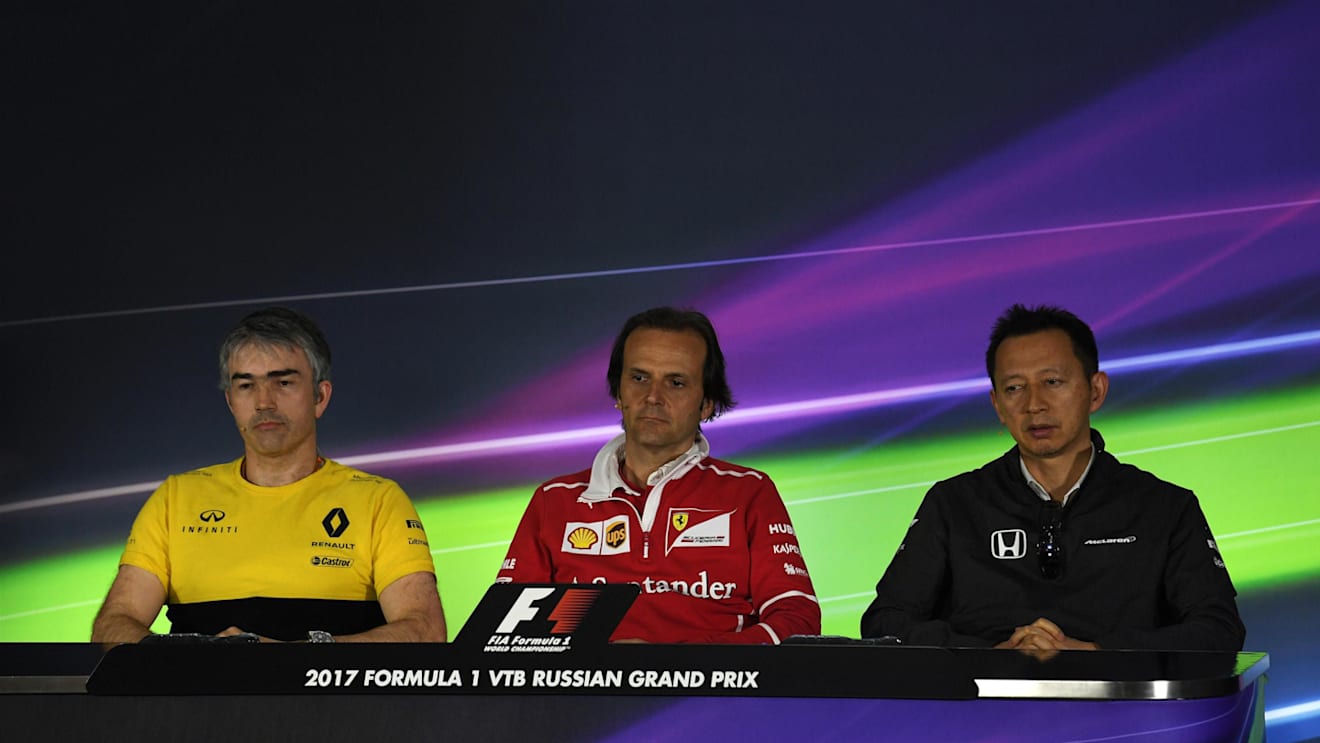
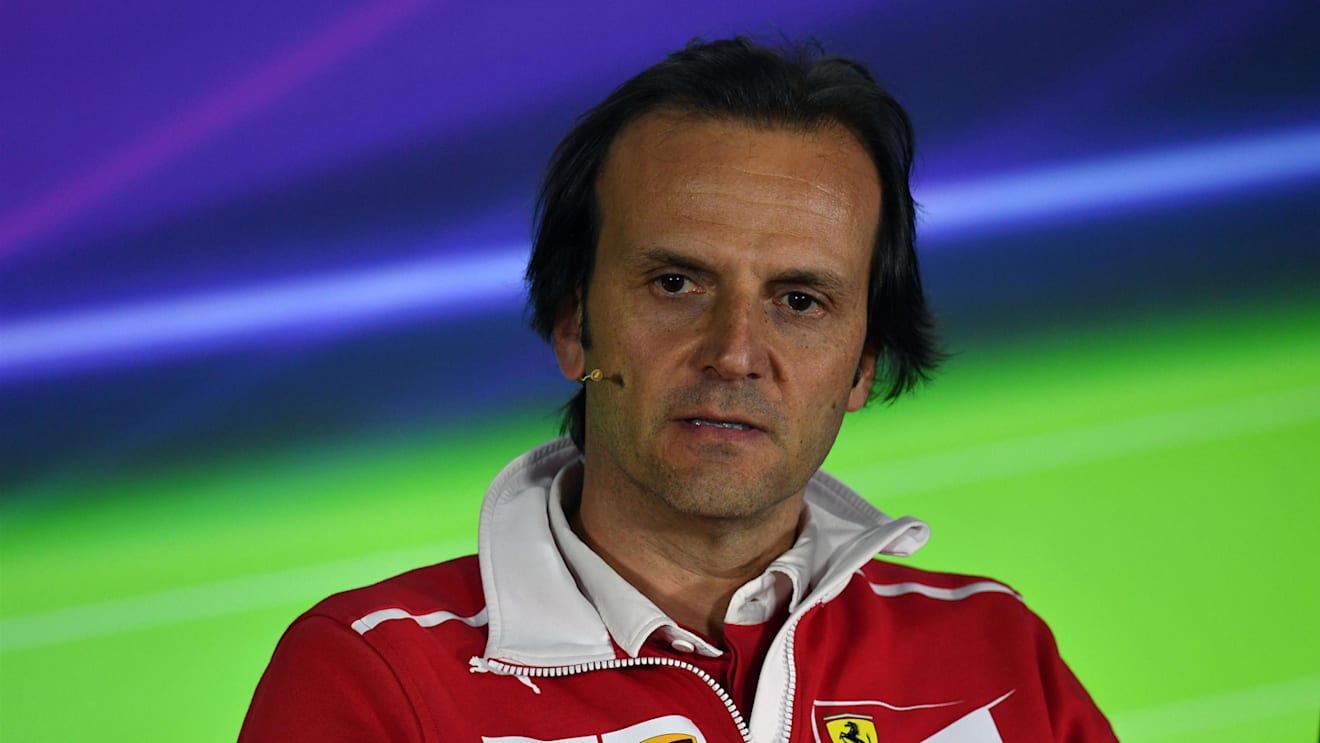
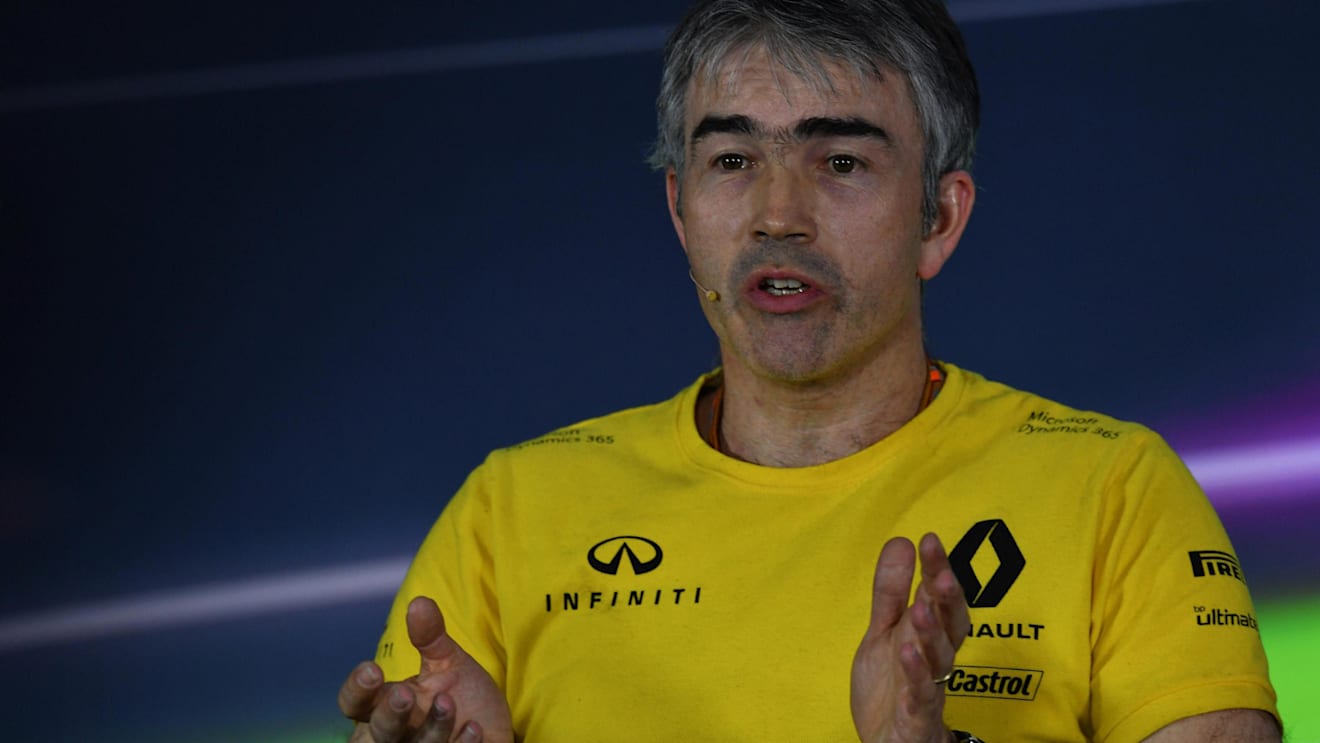
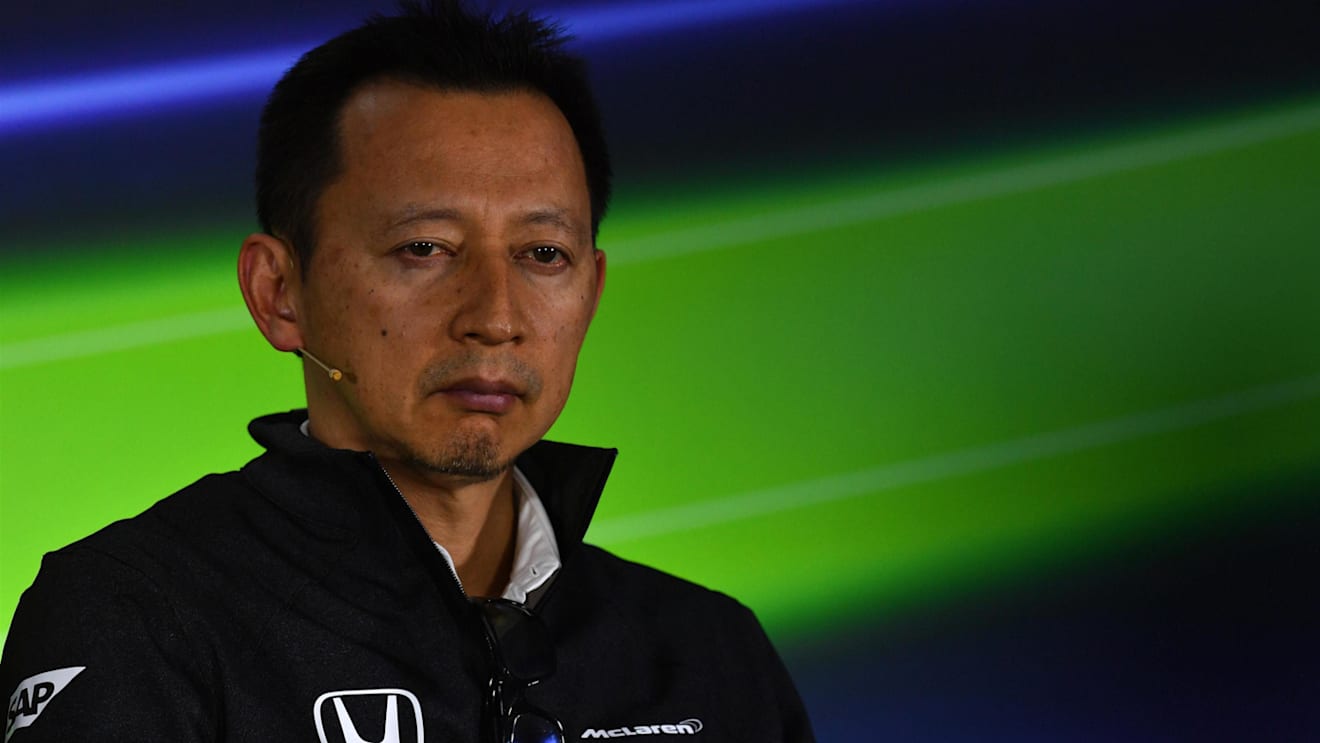
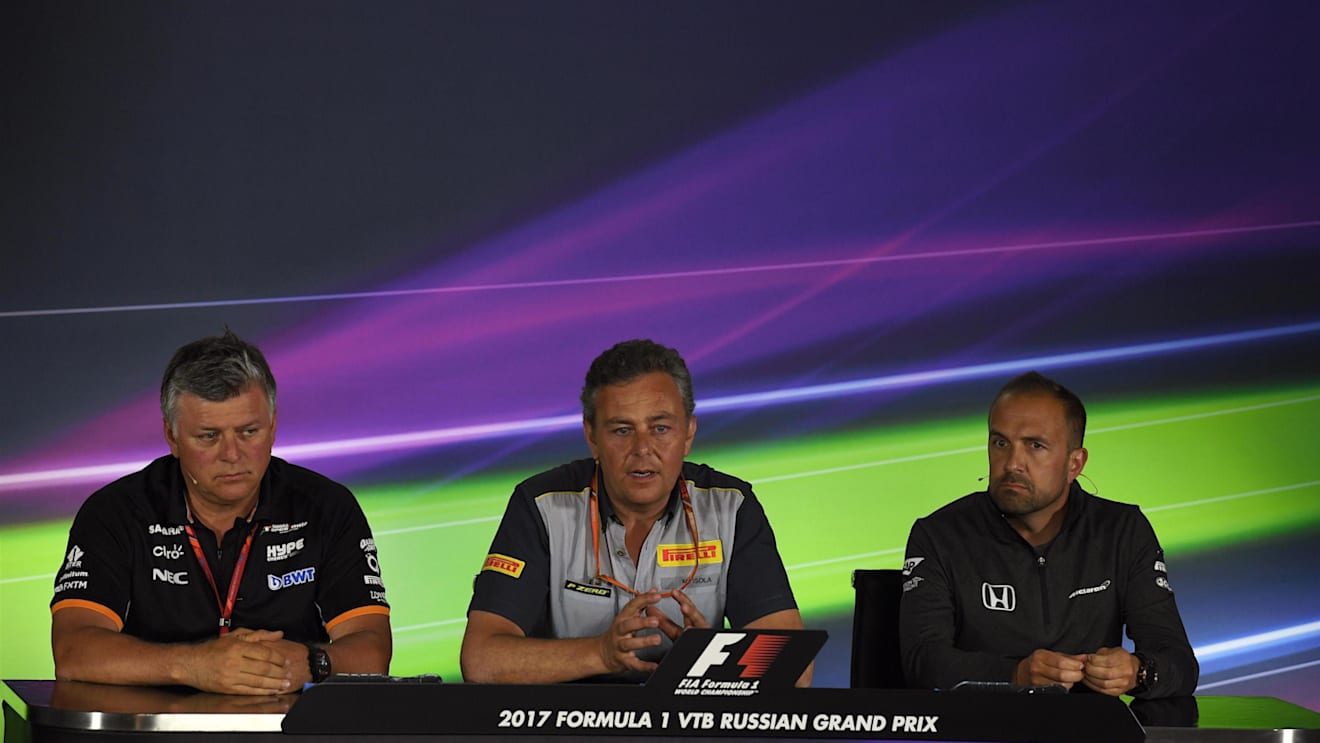
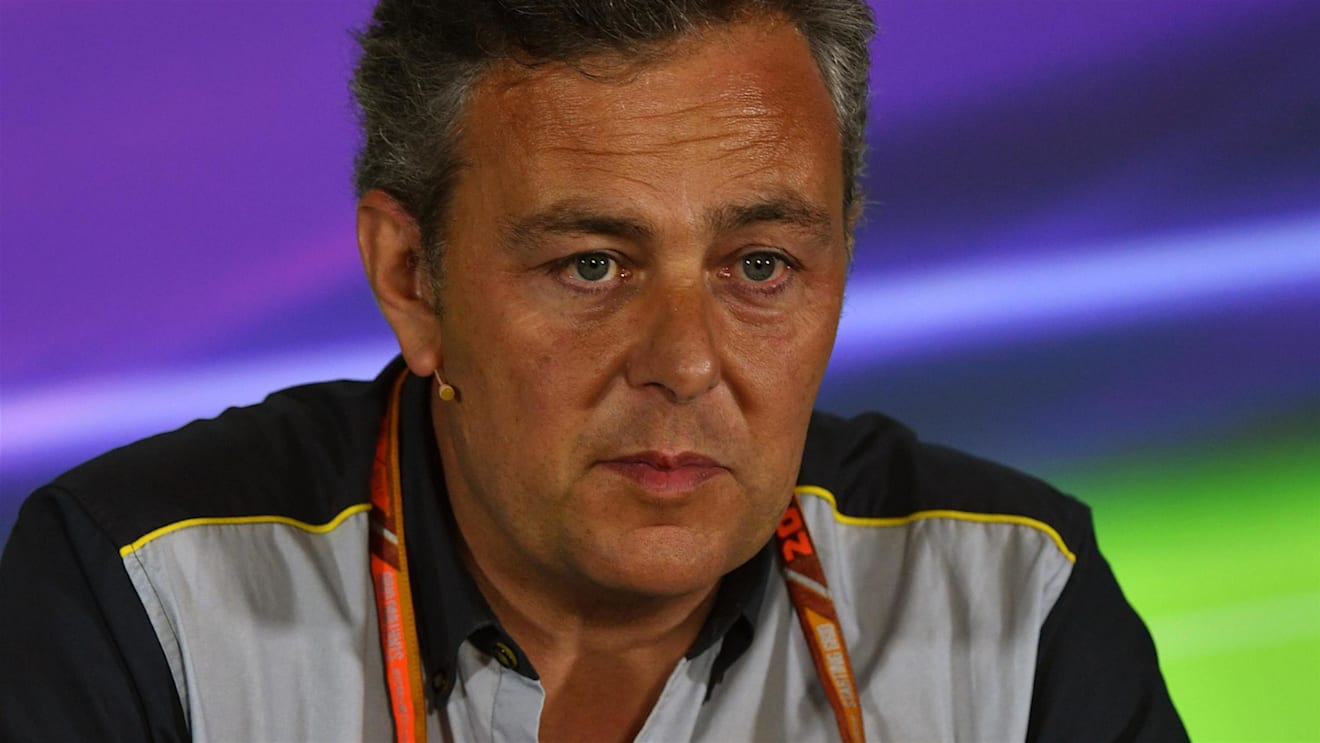
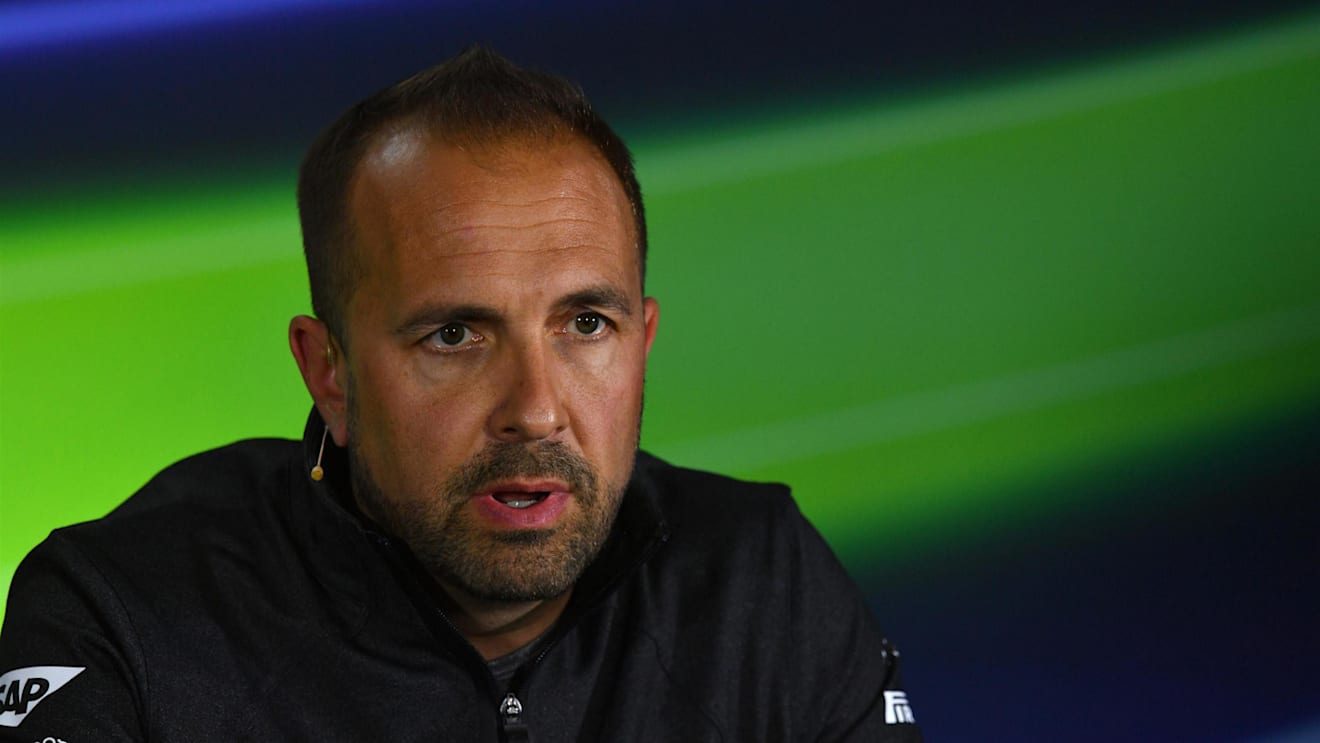
)
